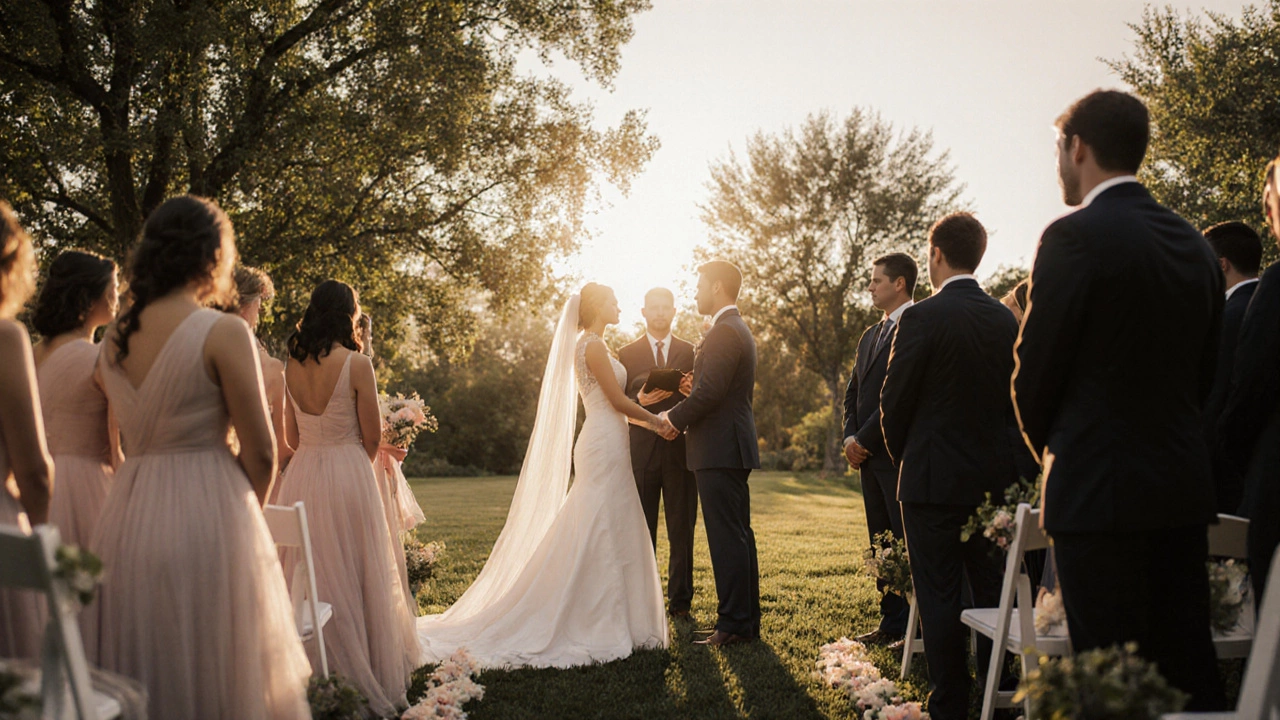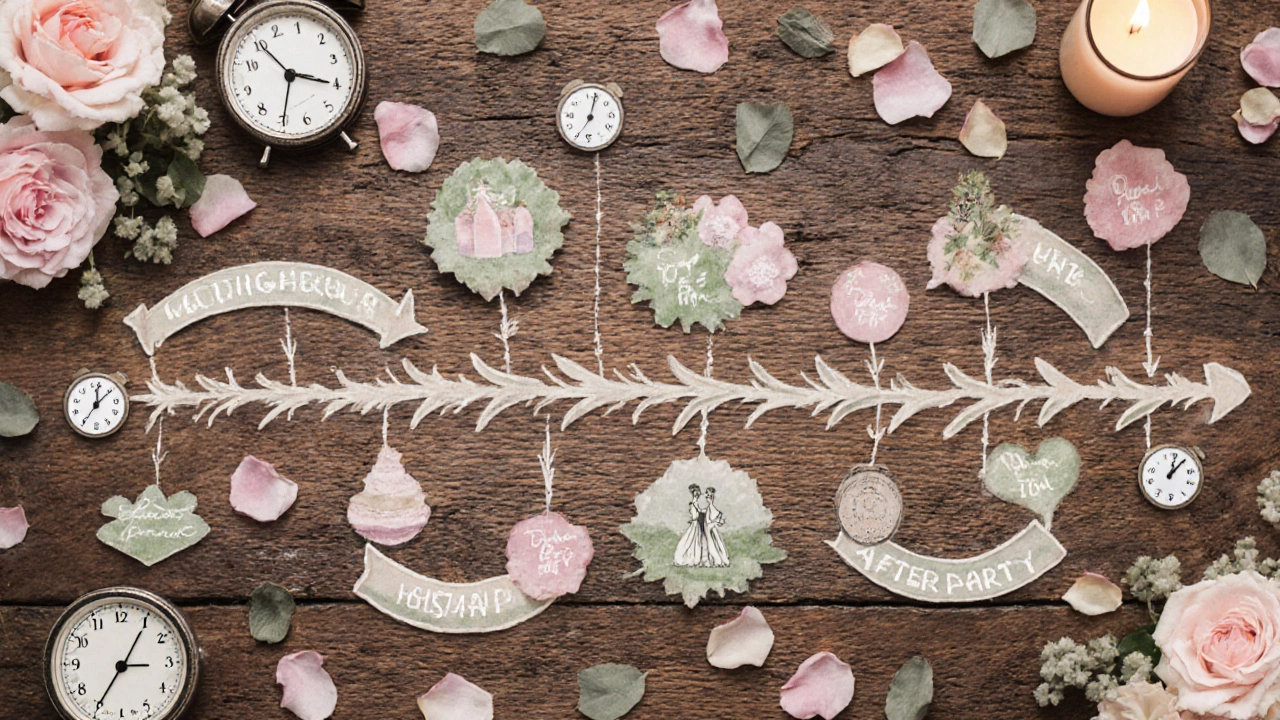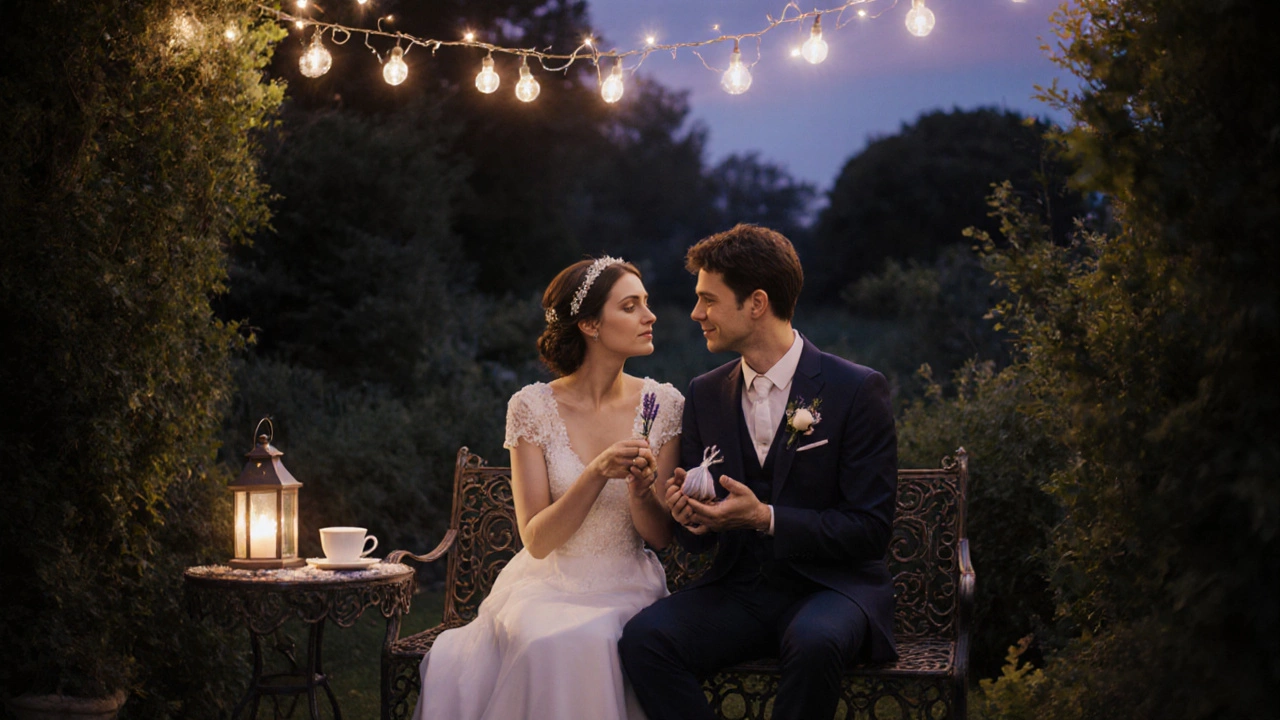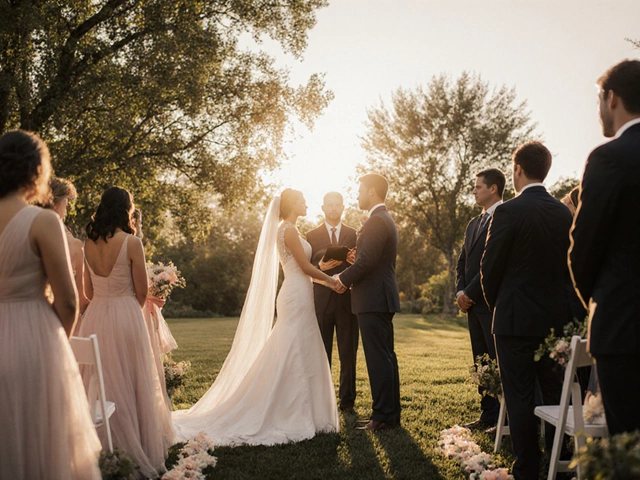
Wedding Timeline Buffer Calculator
Create Your Relaxed Wedding Timeline
Calculate how much buffer time you need between wedding segments to slow down your day and enjoy every moment.
Key Takeaways
- Build a realistic timeline with built‑in buffers.
- Choose ceremony and reception elements that naturally create pauses.
- Communicate clear expectations to every vendor and the bridal party.
- Use mindful moments and simple rituals to stay present.
Most couples feel their wedding day fly by in a blur of activity, leaving them wishing they could savor the moments more. The good news is that a slow wedding day isn’t about dragging things out; it’s about designing a flow that lets you breathe, laugh, and truly experience each part of the celebration.
1. Diagnose the Rush Triggers
Before you can slow things down, you need to know what usually makes a wedding feel hectic. Common culprits include:
- Over‑packed schedules that leave no room for travel between venues.
- Too many formalities crammed into a short ceremony.
- Vendor hand‑offs that happen without clear timing.
- Unrealistic expectations for “perfect” photos at every moment.
Identify which of these apply to your plan, and you’ll have a clear roadmap for adjustments.
2. Design a Buffer‑Friendly Timeline a structured schedule that includes intentional pauses and travel allowances
Start with a rough outline of key events-ceremony, cocktail hour, dinner, first dance, cake cutting. Then add a 15‑minute “breathing space” after each major segment. These buffers serve two purposes: they absorb inevitable delays (traffic, late speeches) and they give you a moment to reset.
- Set a start time that works with natural light for photos.
- Allocate 10‑15 minutes for guests to transition between ceremony and cocktail locations.
- Plan a 20‑minute buffer before the first major speech.
- End the evening with a loose “after‑party” window, not a strict cut‑off.
When you print the timeline, share it with every Vendor any professional providing services on your wedding day and the bridal party. Clear, shared expectations are the backbone of a relaxed flow.
3. Choose Ceremony Elements That Invite Stillness
Even a short ceremony can feel rushed if it’s jam‑packed with readings, music, and procession details. Consider these tweaks:
- Limit readings to one or two meaningful excerpts.
- Opt for a single musical piece rather than a full interlude.
- Allow a brief “moment of silence” after vows for personal reflection.
- Invite guests to stand for the entire ceremony; no separate seating and standing transitions.
These choices reduce movement and give you a sense of calm as you exchange vows.

4. Structure the Reception for Natural Pauses
The reception is where most couples feel the pressure to keep the energy high. To slow the pace without killing the vibe, try these ideas:
- Cocktail hour a relaxed pre‑dinner period with light bites and drinks can be an intentional “unplugged” period-no speeches, just music and mingling.
- Schedule a short “family photo break” after the first dance, giving you a defined time to step away from the crowd.
- Serve dinner family‑style; guests stay seated longer, encouraging conversation.
- Insert a simple ritual like a “thank‑you circle” where you thank each table for a minute, then return to dancing.
These moments act like gentle breaths between high‑energy parts of the night.
5. Empower the Bridal Party the group of friends and family members supporting the couple to Keep Things Calm
Brief your maid of honor, best man, and parents on the pacing plan. Give them specific roles:
- Signal when you’re ready to move on to the next segment.
- Help shepherd guests during transitions.
- Watch the clock and remind the DJ or band to soften the tempo during buffer periods.
When the bridal party is aligned, they become your “pace‑keepers,” preventing the line from speeding up unintentionally.
6. Manage Photography the visual documentation of the wedding day Without Rushing
Photographers love a lively day, but they can also add pressure if you feel you must pose constantly. Talk to your photographer about the buffer plan:
- Schedule a 30‑minute “capture window” after the ceremony for relaxed portraits.
- Allow natural candid moments during cocktail hour instead of forced group shots.
- Agree on a signal (e.g., a wristband) that means “let’s pause for a quick breather.”
When photography is woven into the timeline, you won’t feel pulled in multiple directions.
7. Use Mindfulness Rituals to Anchor the Day
Simple practices can help you stay present even when the schedule is tight:
- Take three deep breaths before walking down the aisle.
- Hold a small stone or scented lavender in your pocket as a tactile reminder to slow down.
- Schedule a 5‑minute “check‑in” with your partner after dinner to share how you’re feeling.
These tiny habits create mental pauses that complement the physical buffers you’ve built.

8. Compare a Rushed Timeline vs. a Relaxed Timeline
| Segment | Rushed (minutes) | Relaxed (minutes) | Key Buffer |
|---|---|---|---|
| Ceremony | 20 | 30 | 10‑minute post‑vow silence |
| Photos | 30 | 45 | Dedicated portrait window |
| Cocktail Hour | 45 | 60 | Unplugged music |
| Dinner | 60 | 80 | Family‑style service |
| First Dance & Speeches | 30 | 45 | 15‑minute buffer before speeches |
| After‑Party | 90 | 120+ | Open‑ended closing |
Notice how the relaxed version distributes time more evenly and inserts buffers where delays usually happen. The extra minutes aren’t wasted; they’re intentional breathing space.
9. Troubleshooting Common Pace Issues
- Vendor running late: Have a backup activity (e.g., a quick guest‑book signing) that can fill unexpected gaps.
- Guests clumping during transitions: Use signage or a dedicated “transition usher” from the bridal party.
- Unexpected rain causing delays: Keep an indoor contingency plan ready and announce it calmly to keep the mood steady.
- Feeling overwhelmed: Step out for a 5‑minute walk or find a quiet corner with your partner.
10. Next Steps for a Calm Wedding Day
Turn the ideas above into action:
- Map your current timeline on paper; highlight any segment under 15 minutes.
- Add a 10‑minute buffer after each highlighted segment.
- Meet with each Vendor and confirm the new timing.
- Run a brief walkthrough with the bridal party a week before the big day.
- Practice a mindfulness cue (breath, aroma, or wristband) and use it throughout the event.
By the time you say “I do,” you’ll have built a day that moves at a pace you control, letting every laugh, tear, and toast feel truly yours.
Frequently Asked Questions
Can I still have a lively reception if I add buffers?
Absolutely. Buffers don’t quiet the party; they simply give you breathing room. You can keep the music upbeat and the dancing energetic, but you won’t feel rushed to jump from one activity to the next.
What if my venue has a strict end‑time?
Plan the most important moments-ceremony, first dance, cake cutting-before that cutoff. Use the after‑party buffer for informal mingling outside the venue if allowed.
How many minutes of buffer are enough?
A rule of thumb is 10‑15 minutes after each major segment. If you have multiple venues or a large guest list, add an extra 5‑10 minutes for travel.
Should I tell my guests about the buffers?
A brief heads‑up is helpful-let them know there’s a relaxed cocktail hour and that speeches will follow a short pause. This sets expectations without over‑explaining.
Can mindfulness techniques feel out of place at a wedding?
Choose subtle cues-like a quiet breath before you walk down the aisle or a gentle touch of a keepsake. They blend into the moment and keep you grounded without drawing attention.


Comments
Post Comment